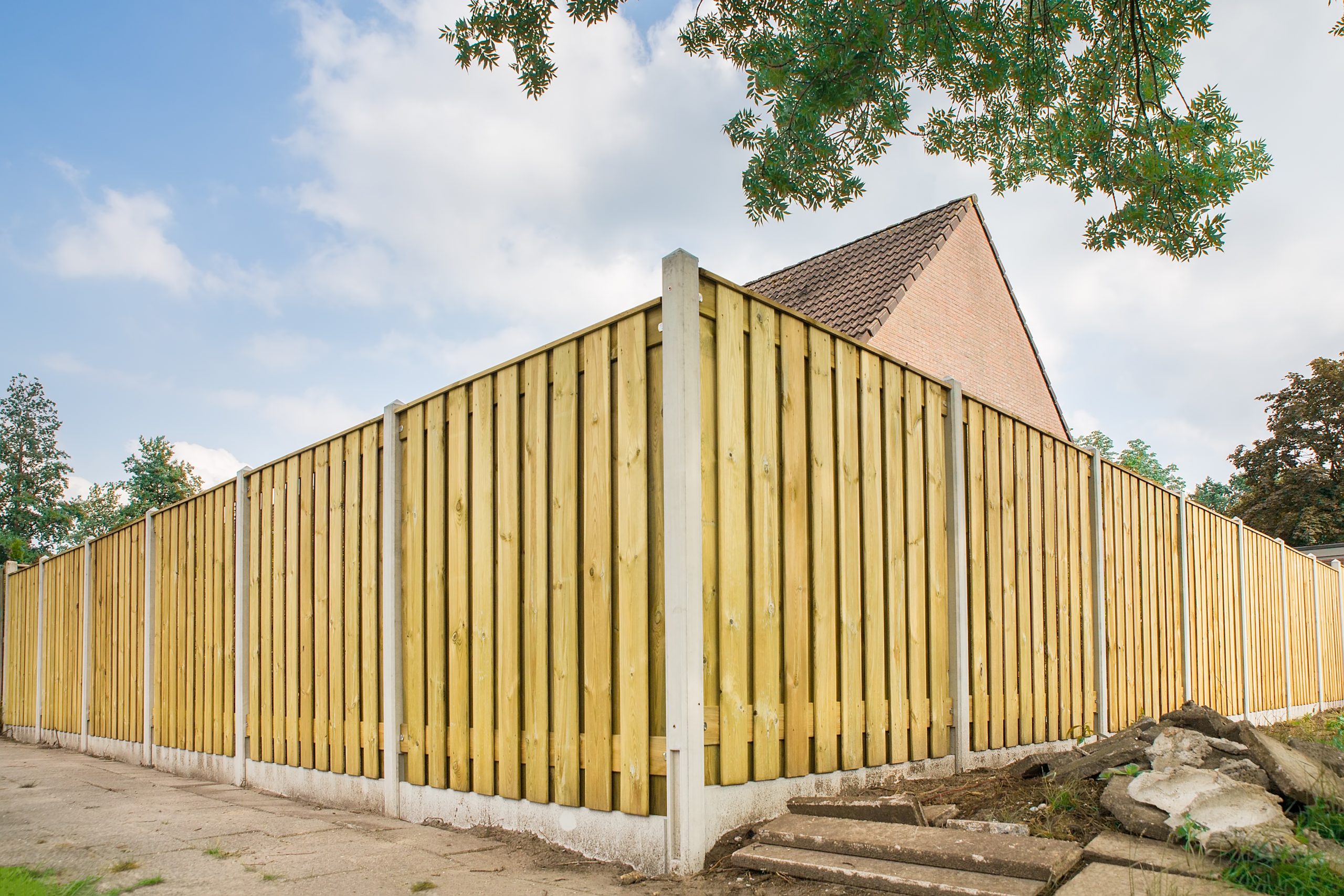Featured
Your fencing is revealed to different climate problems year-round, and while it works as a necessary component of your property, it's likewise among one of the most susceptible elements when it pertains to weather-related damages. Rough winds, heavy rainfall, extreme temperatures, and UV direct exposure can all take a toll on your fence's integrity, bring about tear and put on. There are a few actions you can take to secure your fence and prolong its life expectancy. Here are some effective techniques to protect your fence from weather-related damage.
Wood Fencings: While timber is a traditional selection for fencing, it is at risk to rot, pest, and bending damage, specifically in areas with high dampness. Pressure-treated timber or cedar is more sturdy, but routine upkeep is important to maintain it in good problem. Vinyl Secure fencing: Vinyl is a superb alternative for those looking for a weather-resistant and low-maintenance fence. It's resistant to wetness, will not warp or crack in the warmth, and resists fading from UV rays. Metal Secure fencing: Wrought iron and aluminum are durable materials for secure fencing, however they need a rust-resistant finish to protect them from deterioration as a result of wetness. A protective layer or regular maintenance can avoid rust and extend the life of metal fencings. Compound Fence: Made from a mix of timber fibers and plastic, composite fences are highly resistant to weather components, consisting of uv, dampness, and heat rays. This material offers an equilibrium of sturdiness and aesthetic appeal. Selecting a product fit to your climate will certainly supply far better defense for your fence the long term.
Seal or Discolor the Wood: Applying a high-quality sealant or stain to your timber fence produces a water-proof obstacle that avoids dampness from going into the wood. It also aids secure the wood from UV rays, which can create staining and drying. Reapply Sealant Regularly: With time, the protective obstacle of your sealer or tarnish can use down. Depending upon your environment, it's a good idea to reapply each to 2 years to maintain the wood secured. This therapy will maintain the fencing's appearance, prevent rot, and extend its life-span.
![]()
For extra protection, consider using wind-resistant mesh displays or panels in locations where wind is a considerable worry. This added layer can assist decrease the pressure that the wind puts in on your fencing.
Inspect Water Drainage: Ensure that the ground around your fence inclines away from the messages. Appropriate drainage enables water to move away from the fencing, stopping moisture buildup. Set Up Drainage Systems: In areas where drainage is a concern, take into consideration including a French drain or crushed rock around the base of your fencing posts to redirect water away from the structure. Good drain can avoid rot, rust, and various other forms of weather-related damage.
![]()
![]()
Concrete Footings: Set fencing messages in concrete to avoid them from loosening over time as a result of soil disintegration or shifting ground. Metal Braces: Including metal dental braces to fence messages can supply extra toughness and reduce the threat of leaning or breaking. Strengthening your blog posts guarantees that your fencing will stay in area, even during serious weather condition.
For wood fencings, delicately clean the surface with a light detergent to eliminate dirt and grime. For plastic fencings, make use of a soft cloth and cleaning option to stop accumulation. For metal fencings, evaluate for rust and sand it off prior to applying a fresh layer of paint. Conclusion. Your fence is an essential function of your home, and with the right treatment, it can stand up to the challenges postured by the climate. By choosing long lasting materials, executing normal maintenance, and reinforcing weak points, you can secure your fencing from the aspects and extend its life. Routine evaluations, applying safety coatings, and taking actions to control dampness and wind direct exposure will assist ensure that your fencing stays strong, functional, and eye-catching for many years to find.
- Select Weather-Resistant Products. The products you select for your fence can have a major influence on its capacity to hold up against the aspects. Various materials are better outfitted to handle specific climate problems. Right here's a break down of how different products stand up versus the weather:
Wood Fencings: While timber is a traditional selection for fencing, it is at risk to rot, pest, and bending damage, specifically in areas with high dampness. Pressure-treated timber or cedar is more sturdy, but routine upkeep is important to maintain it in good problem. Vinyl Secure fencing: Vinyl is a superb alternative for those looking for a weather-resistant and low-maintenance fence. It's resistant to wetness, will not warp or crack in the warmth, and resists fading from UV rays. Metal Secure fencing: Wrought iron and aluminum are durable materials for secure fencing, however they need a rust-resistant finish to protect them from deterioration as a result of wetness. A protective layer or regular maintenance can avoid rust and extend the life of metal fencings. Compound Fence: Made from a mix of timber fibers and plastic, composite fences are highly resistant to weather components, consisting of uv, dampness, and heat rays. This material offers an equilibrium of sturdiness and aesthetic appeal. Selecting a product fit to your climate will certainly supply far better defense for your fence the long term.
- Frequently Treat Wooden Fencings. Shielding it from sunshine, moisture, and temperature level fluctuations is crucial if you have a wooden fencing. Timber can absorb moisture from humidity, snow, or rain, triggering it to rot and degrade. Here's exactly how you can shield wood fencings:
Seal or Discolor the Wood: Applying a high-quality sealant or stain to your timber fence produces a water-proof obstacle that avoids dampness from going into the wood. It also aids secure the wood from UV rays, which can create staining and drying. Reapply Sealant Regularly: With time, the protective obstacle of your sealer or tarnish can use down. Depending upon your environment, it's a good idea to reapply each to 2 years to maintain the wood secured. This therapy will maintain the fencing's appearance, prevent rot, and extend its life-span.

- Mount Windbreaks. Solid winds can create substantial damages to fences, particularly those made of light-weight products or high structures. These natural barriers can aid deflect wind, protecting against direct gusts from damaging your fence.
For extra protection, consider using wind-resistant mesh displays or panels in locations where wind is a considerable worry. This added layer can assist decrease the pressure that the wind puts in on your fencing.
- Make Sure Appropriate Drainage Around Your Fence. Standing water is one of the leading reasons for fence damage, especially for wooden fences. Water can damage the fencing posts, triggering them to rot and degrade more promptly. To avoid this:
Inspect Water Drainage: Ensure that the ground around your fence inclines away from the messages. Appropriate drainage enables water to move away from the fencing, stopping moisture buildup. Set Up Drainage Systems: In areas where drainage is a concern, take into consideration including a French drain or crushed rock around the base of your fencing posts to redirect water away from the structure. Good drain can avoid rot, rust, and various other forms of weather-related damage.

- Trim Overhanging Branches and Vines. Trees and plants near your fence might appear like an attractive addition, but they can present threats when left unattended. Looming tree branches and creeping plants can create damage to your fence during storms or high winds. Furthermore, vines can catch moisture against wooden fences, speeding up the decomposing procedure. To protect your fencing, trim any kind of branches or plants that hang over or near the fence routinely. This will certainly decrease the possibility of dropping debris and stop dampness build-up.
- Reinforce Fencing Posts. Fence posts are susceptible to shifting, leaning, and deteriorating, specifically throughout durations of severe weather. If your fencing is in a location that freezes or experiences high winds throughout winter season, it's essential to enhance the posts to keep security.

Concrete Footings: Set fencing messages in concrete to avoid them from loosening over time as a result of soil disintegration or shifting ground. Metal Braces: Including metal dental braces to fence messages can supply extra toughness and reduce the threat of leaning or breaking. Strengthening your blog posts guarantees that your fencing will stay in area, even during serious weather condition.
- Normal Assessments and Upkeep. Normal evaluations are necessary for determining very early signs of weather-related damage. Inspect your fencing after tornados or hefty rainfall to look for problems such as loose boards, drooping blog posts, or rusted areas. Early discovery of minor troubles can conserve you from costly repairs later on. In addition, cleaning your fence periodically aids maintain its condition. :
For wood fencings, delicately clean the surface with a light detergent to eliminate dirt and grime. For plastic fencings, make use of a soft cloth and cleaning option to stop accumulation. For metal fencings, evaluate for rust and sand it off prior to applying a fresh layer of paint. Conclusion. Your fence is an essential function of your home, and with the right treatment, it can stand up to the challenges postured by the climate. By choosing long lasting materials, executing normal maintenance, and reinforcing weak points, you can secure your fencing from the aspects and extend its life. Routine evaluations, applying safety coatings, and taking actions to control dampness and wind direct exposure will assist ensure that your fencing stays strong, functional, and eye-catching for many years to find.
Latest Posts
Uncover the Top Auto Repair Discounts in Montclare, Chicago
Published May 27, 25
1 min read
Take Advantage of Exclusive Auto Repair Deals in Chicago at Montclare Auto Repair
Published May 25, 25
1 min read
Find Montclare Auto Repair’s Highly Requested Auto Repairs and Why Drivers Rely On Them
Published May 23, 25
1 min read
More
Latest Posts
Uncover the Top Auto Repair Discounts in Montclare, Chicago
Published May 27, 25
1 min read
Take Advantage of Exclusive Auto Repair Deals in Chicago at Montclare Auto Repair
Published May 25, 25
1 min read
Find Montclare Auto Repair’s Highly Requested Auto Repairs and Why Drivers Rely On Them
Published May 23, 25
1 min read